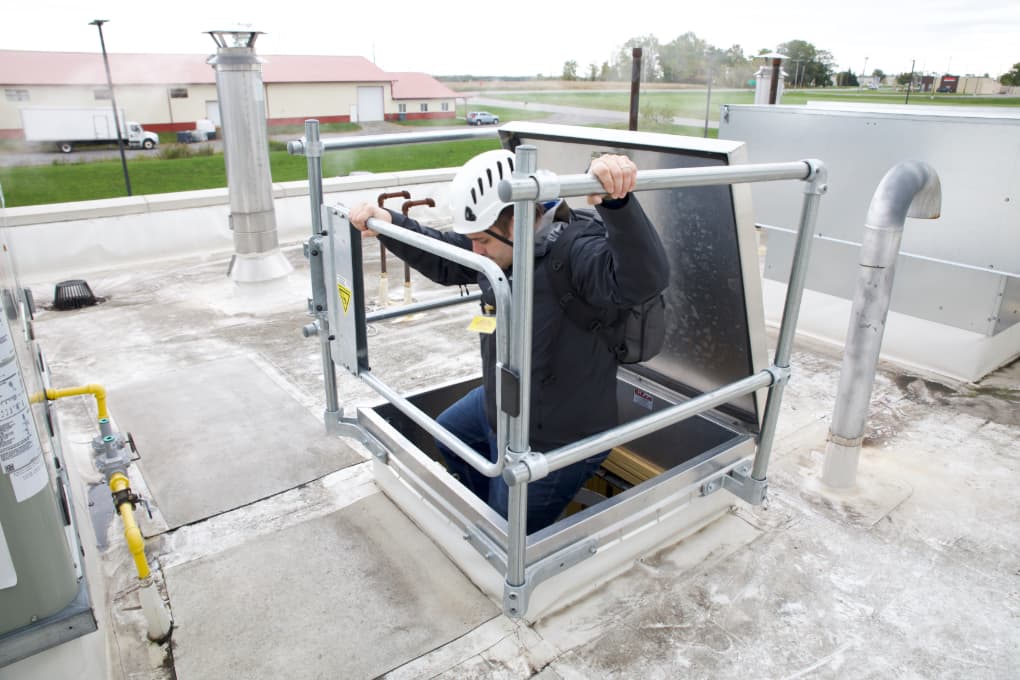Roof Hatches — A Commonly Overlooked Roof Hazard

It is easy to look at a roof edge and understand the risk of going near it. However, what fall hazards cross your mind while you’re standing in the center of the roof?
The roof access hatch is often an overlooked and underestimated fall hazard. While it is closed, a user may feel safe from the hole it protects, however, what happens when the hatch door is left open? In order to truly have a culture of safety, this mindset needs to change. So, how do we begin that change? It starts with understanding what is required of us. Let's look at what protections we need, starting with OSHA.
Hatches Need to be Protected by Guardrail: 1910.28(b)(3)(iv)
OSHA requires fall protection in the form of guardrail at an opening in the rooftop, including hatches, ladderways, and holes. Guardrail is the only option for exposed sides on holes and hatches in the roof. Personal fall arrest systems and netting are not sufficient despite being available forms of safety at the roof edge.
It is important to recognize the term "exposed sides". The side of the ladderway that the hatch door opens towards is typically not considered an exposed side if the door is tall enough in its opened state. Also, the idea is that the door will cover the hole if you were to fall on that side.
The other important item to recognize is how to protect the entrance. A safety chain has been used and is included with many hatch railing kits. This is not a viable option in the USA. You can use a self-closing gate or an offset.
Hatches Need Offset Railing: 1910.29(b)(13)(ii)
The goal with both the self-closing gate and the offset is to ensure that the user does not accidentally fall into the open hatch. A self-closing safety gate allows no break in the railing for more complete protection but requires a user to interact with the gate to exit. The offset will bar direct traffic, but still leaves a break in the railing that gives access to an open hatch. You will have to determine what option is better for you based on your employees and the work area.
Hatches Within 10 Feet of the Roof Edge: IBC Chapter 10: Means of Egress; 1011.13 Guards.
OSHA is not the only organization with some stipulations around roof hatch safety. I have seen many instances where the user steps within inches of the roof edge while exiting the hatch. The 2018 International Building Code has an answer for that. While IBC does not govern local municipalities, most local building codes adopt its standards. You will need to check your local code to find out if this applies.
Any roof hatch providing access within 10’ of a roof edge must be protected by said edge by a guardrail. Here we see that the hazard for roof access is not just the hatch itself but also the proximity to the roof edge. While local codes will require a guardrail within 10 feet, OSHA requires that any access within 15 feet (sometimes more depending on the type and frequency of access) should be protected from a roof edge.
It is far too easy to stumble while egressing through a roof hatch and that could result in a catastrophic incident.
It is important to continually assess your work areas for risks and hazards. If this isn't something that you have considered before or are not sure how to move forward after recognizing the hazard, then the good news is that there are effective and easy-to-install solutions for roof hatch railings and the edges near them. Our team of fall safety experts can help you assess your areas of concern and find the solution that works best for you.



